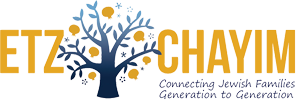Lag B'Omer ב"ג בעומר
Three people who eat together and share words of Torah, it's as if they are at God's table.
- Rabbi Shimon bar Yochai, Pirkei Avot 3:3
33rd Day in the Omer
Lag Ba'Omer literally means the number 33 and occurs on the the 33rd day in the Omer count - that is, 33 days after the first day of Pesach. A break from the semi-mourning of the Omer, key aspects of Lag B’Omer include holding Jewish weddings - the only day during the Omer when Jewish law permits them - the lighting of bonfires and getting haircuts [because, traditionally, haircuts are forbidden during periods of mourning]. The Talmud teaches that during this season a plague killed thousands of Rabbi Akiva‘s students and according to a medieval tradition, because the plague ceased on Lag B'Omer, the day became a happy one interrupting the sad¬ness of the Omer period for 24 hours. Lag Ba'Omer is identified as the yahrzeit of Rabbi Shimon bar Yochai, one of the key rabbis quoted in the Mishna and thought to be the author of the core text of Kabbalah, the Zohar. Customary celebrations include bonfires, picnics and fun. Lag b'Omer is associated with the Bar Kokhba revolt against the Roman Empire. In Zionist thought, the plague that decimated Rabbi Akiva's 24,000 disciples is explained as a veiled reference to the revolt; the 33rd day representing the end of the plague is explained as the day of Bar Kokhba's victory. The traditional bonfires and bow-and-arrow play were thus reinterpreted as celebrations of military victory.


